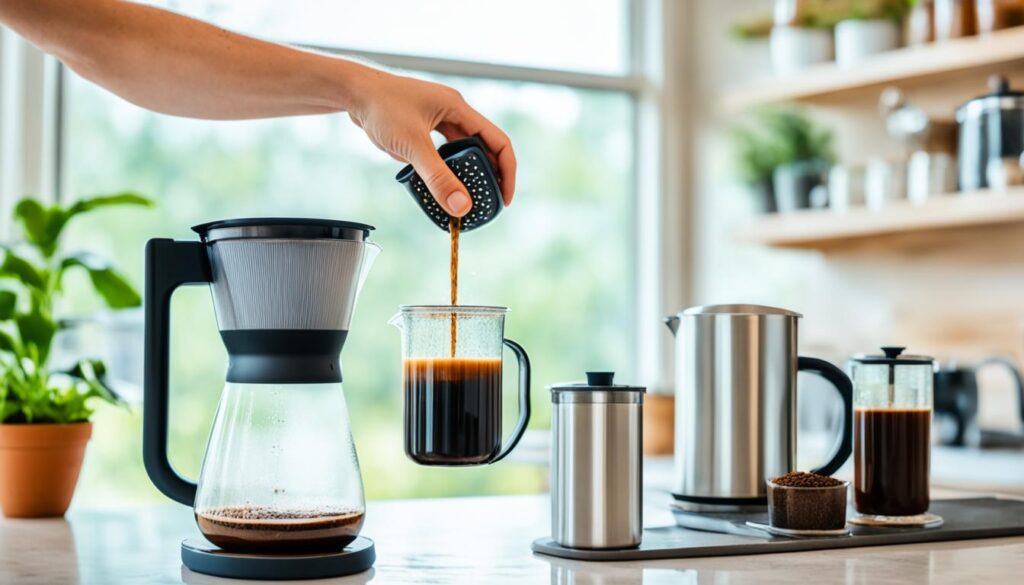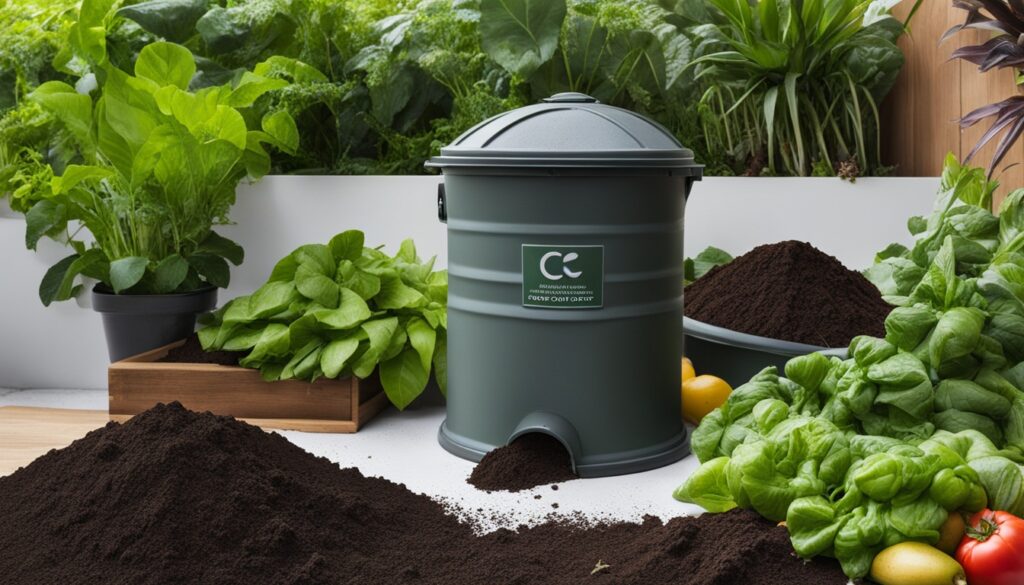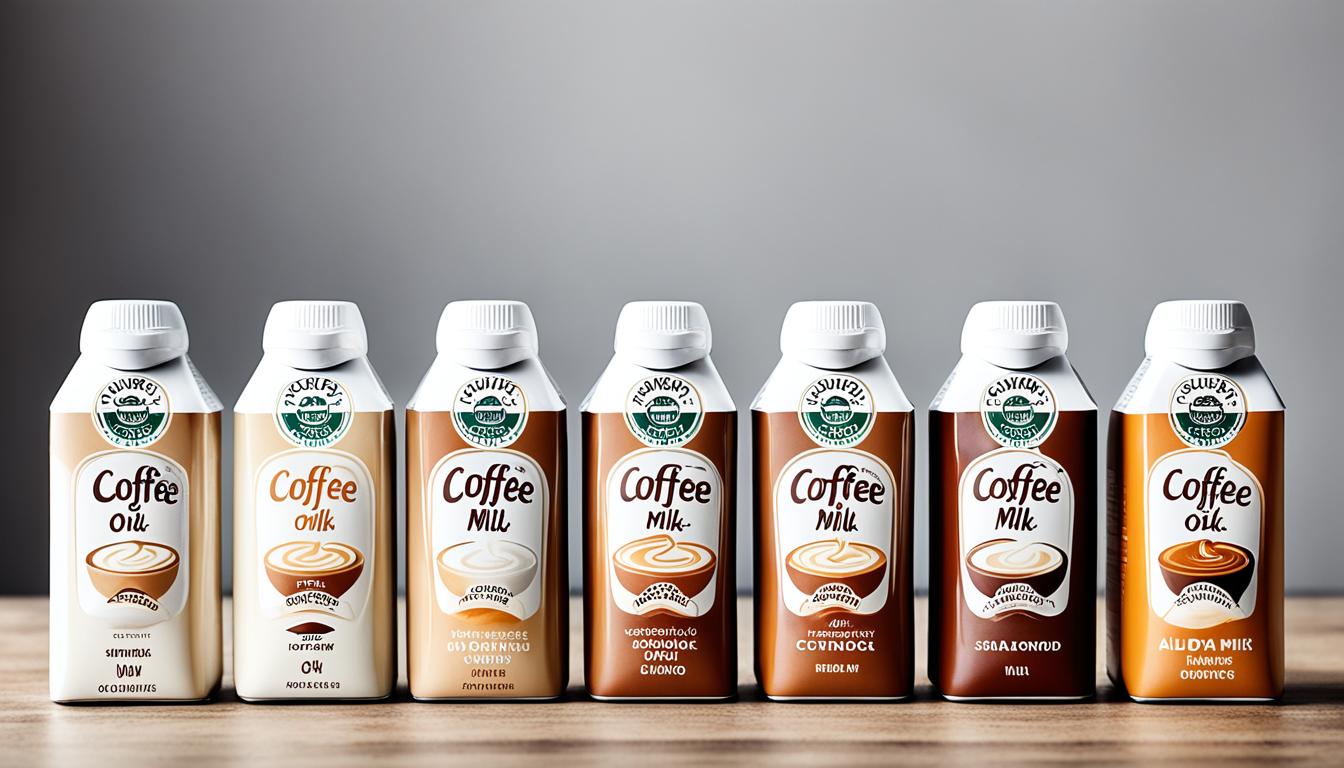Every year, approximately 500 billion cups of coffee are consumed globally. This significant figure highlights the environmental impact of coffee. It is important for coffee enthusiasts to adopt eco-friendly practices, such as green coffee habits, to minimize waste and promote sustainable ways of enjoying coffee. Making simple, environmentally conscious choices in our daily routines can greatly contribute to reducing our carbon footprint and promoting a healthier planet.
Growing coffee uses a lot of resources, from water to energy, especially for packaging and disposables. Yet, small steps can make a big difference. Choosing eco-friendly coffee brands, composting coffee grounds, and using reusable cups can change your coffee routine for the better. This article will give you tips on eco-friendly coffee choices. You can enjoy your coffee and help the planet at the same time.
Key Takeaways
- Green coffee habits can significantly reduce environmental impact.
- Choosing sustainable coffee brands supports eco-friendly practices.
- Composting coffee grounds and filters prevents waste in landfills.
- Investing in reusable coffee products minimizes single-use items.
- Home brewing can lower the carbon footprint associated with coffee consumption.
- Simple daily changes can lead to a more sustainable coffee routine.
Understanding the Environmental Impact of Coffee Production
The impact of coffee farming stretches beyond just the pleasant smell in kitchens. It’s a major beverage worldwide, so its environmental effects are huge. For those wanting to choose wisely, it’s crucial to understand how coffee affects our planet.
Global Coffee Consumption Statistics
Every year, over 500 billion cups of coffee are enjoyed around the globe. In the U.S., 73% of adults drink coffee daily, even more than water. North America and Europe are key in the coffee market due to their high consumption.
- By mid-century, demand for coffee is anticipated to triple, prompting farmers to enhance production methods.
- Smallholder farmers, who contribute 80% to global coffee production, often face economic challenges, with many living below the poverty line.
- Transitioning to sun-grown coffee methods has positively impacted over 40% of cultivation areas in regions such as the Caribbean and Central America.
Carbon Footprint of Coffee Production
Coffee’s carbon footprint is large. Most coffee grows in the Southern Hemisphere but is mostly wanted in the north. This means a lot of emissions from transporting beans a long way to consumers.
“On average, farmers receive only 7% to 10% of the price for each kilo sold at retail, often exacerbating the poverty level among those who cultivate the crop.”
Also, habits like using single-serve capsules hurt the environment a lot. Millions of these capsules fill landfills, raising the coffee industry’s pollution. But, we can lessen this impact. Using reusable cups and green brewing methods helps. Choosing energy-saving machines and composting grounds also lowers coffee’s carbon trail.

How to Reduce Waste in Your Coffee Routine
Reducing waste in coffee routines is about more than picking green practices. It means making smart choices at all steps of your coffee journey. Simple changes in daily habits can make a big difference in cutting down coffee waste. Plus, you still enjoy a fantastic cup of coffee.
Simple Swaps for a Greener Brew
Switching to making coffee at home can greatly reduce waste from single-use cups and packaging. Instead of using throwaway coffee options, people can choose equipment that’s reusable and customizable. Companies like ROK produce espresso machines that not only make top-notch coffee. They are also built to last, with a special focus on sustainability, including a 10-year warranty for metal parts. Choosing these kinds of products helps lower the energy and water used compared to commercial brewing.
- Use reusable mugs instead of disposable cups to minimize the staggering 16 billion paper cups used annually, which leads to the destruction of millions of trees.
- Opt for precise water measurement during brewing to save energy and enhance flavor.
- Turn off coffee machines when not in use to conserve electricity.

Choosing Sustainable Coffee Brands
Picking sustainable coffee brands is key to supporting fair and green coffee practices. Brands with labels like Fairtrade, Organic, or Bird Friendly aim to ensure ethical farming. Fairtrade helps farmers get rightful pay, while organic planting stops the use of harmful chemicals, helping the environment. For instance, Antz is a local shop working directly with ethical groups. They also sell coffee in bulk to cut down on packaging waste.
Making smart buying choices doesn’t just help reduce coffee waste. It also encourages a wider range of coffee use with less impact on the environment. With over half of American adults enjoying coffee every day, these mindful steps can add up to a big difference for our planet.
Brew Your Coffee at Home
Brewing coffee at home is both fun and smart. It lets you pick top-notch beans while cutting down on trash. Plus, you could save up to $1,000 a year. This is great if you often buy fancy coffee out.
Benefits of Home Brewing
Making coffee at home is a smart money move. It shows you’re serious about saving, not just living for now. It proves happiness doesn’t only come from buying things.
It also helps you quit spending without thinking. Plus, saving a little each day teaches discipline. It shows how small choices can bigly improve your future.
Eco-friendly Brewing Techniques
Eco-friendly brewing is key for less waste and using less energy. Tools like the French press and moka pot are much better for the planet. And choosing a stainless steel filter over paper cuts down on garbage.
Taking steps to brew sustainably has big perks. For instance, not using a disposable cup every day can save the planet. It cuts down a lot of emissions and saves resources. This shows that home brewing is better for both taste and the earth.

| Action | Daily Savings | Yearly Impact |
|---|---|---|
| Brewing at Home | Less than $2 | Up to $1,000 |
| Replacing Disposable Cups | N/A | 23 lbs GHGs, 281 gallons of water, 16 lbs waste |
| Using Alternative Milk | N/A | 80% smaller carbon footprint with oat milk |
Composting Your Coffee Grounds and Filters
Many coffee enthusiasts don’t see how handling coffee leftovers can help the planet. Composting coffee grounds and filters cuts down on waste. It also returns important nutrients to the earth. This practice improves compost quality and promotes green gardening.
Composting Basics for Coffee Byproducts
Recycling coffee waste through composting is a great idea. Coffee grounds have a lot of nitrogen. But you must mix them with brown materials like dry leaves. This mix helps achieve a perfect compost balance.
If the mix is wrong, you might get bad smells or poor breakdown. Good composting takes 3 to 6 months. It needs regular stirring. Coffee filters, which break down easily, also add value to the compost.
Alternative Uses for Coffee Grounds
Beyond composting, used coffee grounds can be quite useful. Here are some inventive ideas:
- Natural deodorizer: Keep coffee grounds in a container to soak up bad smells at home.
- Fertilizer: Blend them into your garden soil to help acid-loving plants grow better.
- Pest deterrent: Spread grounds around your plants to keep slugs and snails at bay.
- DIY beauty scrub: Mix grounds with coconut oil for a refreshing skin exfoliant.
These ideas encourage reusing and reducing coffee waste. By composting or finding new uses for coffee byproducts, we can contribute to a greener future.

| Application | Benefit |
|---|---|
| Composting | Enriches soil with nutrients |
| Natural Deodorizer | Absorbs unwanted odors |
| Pest Deterrent | Keeps slugs and snails away |
| Fertilizer | Enhances growth for acid-loving plants |
| DIY Beauty Scrub | Provides natural exfoliation |
Investing in Reusable Coffee Products
Switching to reusable coffee products can greatly reduce environmental waste. People searching for eco-friendly coffee habits have many options. They can choose reusable coffee filters and pods, which save money and help the planet.
Reusable Coffee Filters and Pods
Using reusable coffee filters and pods cuts down a lot of waste. Brands like My K-Cup provide options that are easy to use and clean. Coffee lovers can make a positive impact on the environment by choosing these products.
Advantages of Stainless Steel Filters
Stainless steel coffee filters have many benefits over paper filters. They are durable and good for the planet. One big plus is they can be used over and over, saving money and reducing waste.
They also don’t take in coffee oils, which means better tasting coffee. Choosing stainless steel filters improves sustainability and the coffee experience.

| Product Type | Environmental Impact | Flavor Quality | Cost Efficiency |
|---|---|---|---|
| Disposable Filters | High waste generation | Absorbs oils, affects taste | Recurring costs |
| Reusable Coffee Filters | Minimal waste, sustainable | Retains oils, enhances flavor | Cost-saving over time |
| Stainless Steel Filters | Zero waste, highly sustainable | Optimizes taste, full-bodied | Investment returns |
Supporting Local Coffee Shops with Eco-friendly Practices
Supporting local coffee shops helps promote sustainable practices. Many U.S. cafés focus on eco-friendly methods. This sets an example for other businesses. By choosing these places, we support environmental awareness and community health.
Choosing Sustainable Cafés
Look for coffee shops that use biodegradable products and recycle. Eco-friendly cafés often serve organic-certified beans. They avoid harmful chemicals. They also work with fair trade suppliers. This ensures farmers are paid well and the environment is protected.
By picking these coffee shops, we motivate others to be sustainable too.
Benefits of Bringing Your Own Mug
Using your own mug reduces landfill waste. Millions of tons of waste come from single-use cups annually. A reusable cup cuts down on this waste. It shows others how easy being eco-friendly can be.
Many coffee shops offer discounts if you bring your own mug. This encourages even more people to act sustainably.

| Benefit | Description |
|---|---|
| Reduction in Waste | Using a reusable mug cuts down on disposable cup waste. |
| Support for Local Economy | Buying from eco-friendly cafés helps local businesses and their green efforts. |
| Promotes Sustainability | Choosing green cafés pushes for more eco-friendly community practices. |
| Cost Savings | Discounts for bringing your own mug offer financial perks. |
Conclusion
Making your coffee routine more eco-friendly can change how you see your favorite drink. By brewing at home using methods like the French press or pour-over, you can be kinder to the planet. Choosing reusable products made of sustainable materials such as bamboo and stainless steel also helps cut down on waste.
Supporting coffee brands that offer refillable or compostable options is key to green coffee habits. Each small step helps in the fight for a cleaner environment. Using compostable coffee grounds enriches the soil in gardens, reducing waste even further.
It’s important to avoid single-use items like plastic stirrers and straws to fight plastic pollution. Switching to energy-saving coffee machines and storing beans correctly can reduce waste. These changes help make our planet healthier.
Adopting green coffee habits is both smart and satisfying. By choosing ethical and sustainable coffee options, we support environmental conservation. Every intentional cup of coffee brewed shows our commitment to a sustainable lifestyle, inspiring others to follow.









